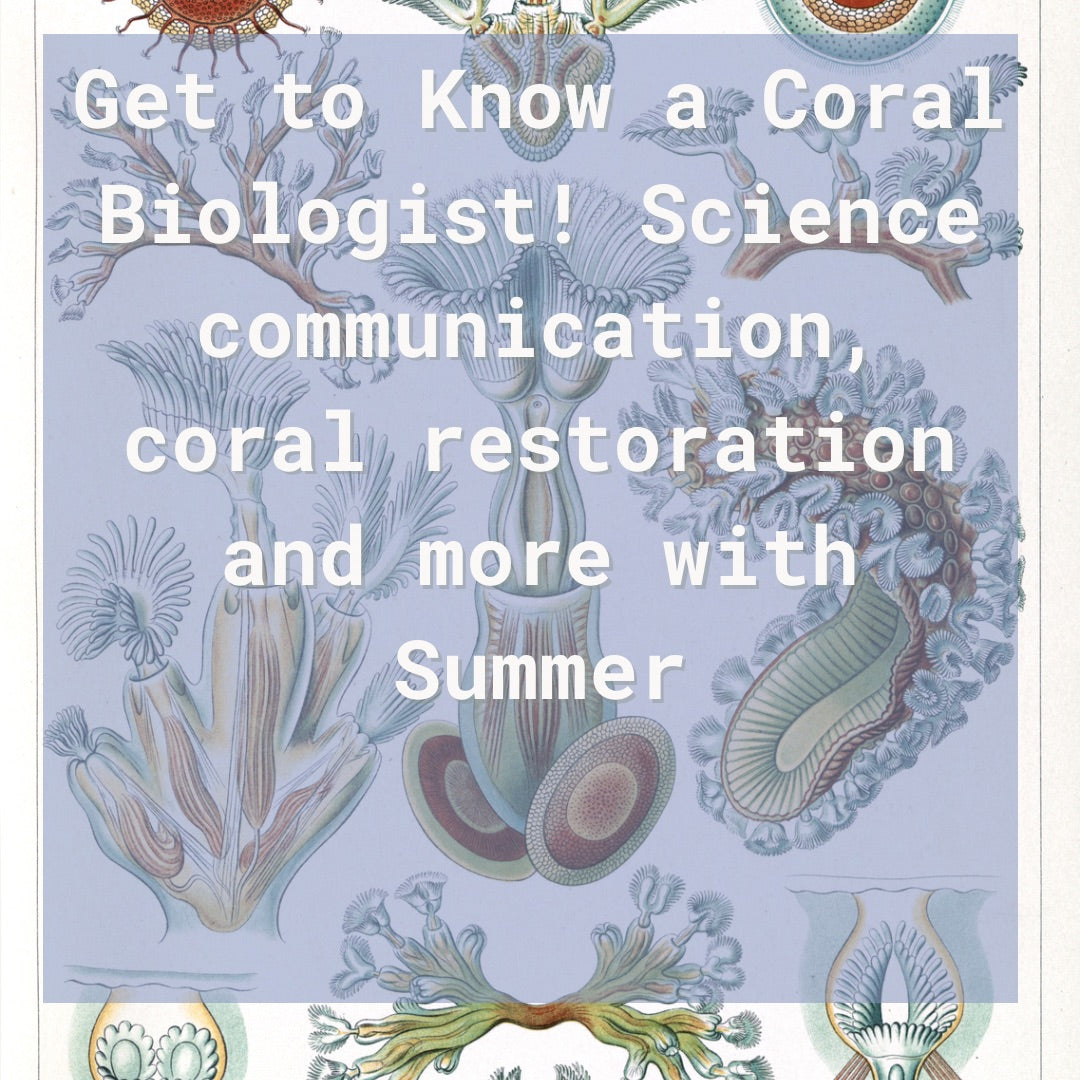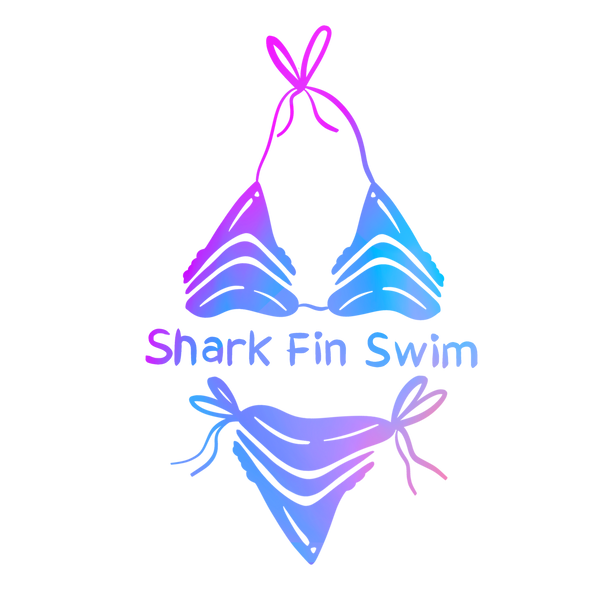
Get to Know a Coral Biologist
Share

Get to Know a Coral Biologist!
Welcome to a new blog series with Shark Fin Swim. I’m Hope, the founder and ocean illustrator behind Shark Fin Swim. Our small business helps raise awareness for ocean conservation through our hand drawn colorful prints perfect for ocean lovers. Using eco friendly materials and production practices we are bringing ocean advocates a more sustainable option for swimwear. As a biologist and purpose driven small business owner this blog series is going to give you an inside look of what it’s like to be a Marine Scientists Biologists, Diver, Professional mermaid and so much more! Let’s meet our biologist for this week!

Follow Summer on Instagram @summer.scientist
Can you give us an introduction to tell us a little bit about what you do?
I’m a little bit all over the place! I’m a science communicator, educator, coral restoration biologist, and author… as well as traveler, total book nerd, and big time hiker. Right now I’m working on publishing my first book full time but I’m looking to get back into the field full time!
How did you land on Corals as your area of study?
Purely by accident. I initially went into the field to study sharks, when I ended up doing an internship at a coral lab that ended up turning into a full time role! The longer I worked at the lab the more I fell in love with corals!
At UNCW you worked in a microplastics lab, what were some of the most shocking things you learned?
Just how small the particles in microplastics can be. Most are not visible to the human eye. Besides that, once you become aware just how much plastic we are using you can’t unsee it. Plastic. is. everywhere.
Around the same time you also did some work with sea turtle rehabilitation, what was your favorite experience working with sea turtles and what species did you primarily work with?
I primarily worked with green, kemps ridley, and loggerhead species! My favorite though was a Kemps Ridley named Honeybee!
After you started working with Coral in the Florida Keys and mentoring interns you started using Instagram as a new outlet to educate people on the ocean. Has being a science communicator on social media been more challenging in some ways than mentoring interns in person?
There’s definitely challenges with both. Finding ways to connect and instruct interns requires me to be able to demonstrate and describe the how what when and why in multiple different ways. I will say, the hardest is probably keeping up with the new interesting lingo nowadays! The description of different processes translates really well into the online world! The online is difficult beast because you’re trying to educate people about things they’ve never seen in person before, and a lot of this work has a heavy emphasis on emotional ties to the environment which is sometimes hard to create using online platforms. There’s also a decent amount of hate online, especially now. People saying they’re happy research and science is getting defunded. Along with blatant misinformation.
What species of coral do you work with typically?
I primarily worked with APAL (Acorpora palmata) Elkhorn coral, although I worked with over 17 different native species to FL keys reefs and another 200 or so species from Pacific/Indonesian areas.
photo via @summer.scientist
Are they any common misconceptions most people have about coral or they don’t understand that you wish was talked about more?
That coral is an animal!!!! I will scream it from the rooftops. Even the basics of coral, coral reefs, and human interactions with coral reefs are not widely understood.The amount of names I’ve seen carved into coral only proves that. I also wish there was more coverage on the multifaceted impacts that we are having on coral reefs, yes you hear about coral bleaching, and arguably the largest threat to our reefs is climate change… but it’s so much more than that. It’s pollution, overfishing, bleaching, tourism, climate change, biodiversity loss all wrapped up into one horrible bundle.
In recent years the negative impacts on sunscreens and coral reefs has been brought to light in the media. Do you have any favorite reef safe brands for sunscreen, hair care, make up etc?
Yes!!!! Stream to sea is one my favorite brands. Kook is also another one. Here’s several more! Sea and Summit. Goddess Garden. Manda. Raw Elements. Raw Love. Mama Kuleana. Body Block. Save the Reef is a good website to check in!
Are there any resources you recommend for people wanting to pick reef safe products but aren’t sure what to look for?
There’s a ton of resources online luckily. The most important thing is to read your labels and avoid certain ingredients.
- Oxybenzone (Benzophenone-3)
- Octinoxate (Octyl Methoxycinnamate)
- Octocrylene
- Homosalate
- 4-Methylbenzylidene Camphor (4-MBC)
- Parabens (Methylparaben, Ethylparaben, etc.)
- Triclosan (found in some “antibacterial” sunscreens)
photo via @summer.scientist
For those who don’t know can you explain how coral bleaching happens and what that means?
Coral Bleaching is effectively whenever coral gets too hot and kicks out its zooxanthellae. Zooxanthellae is an algae that lives in coral tissue giving coral their colors! When that algae is not present their tissue appears clear being able to see their skeleton underneath. The problem with this is, zooxanthellae create the main food source for coral, so coral will either die from the heat or starve.
Can you give a brief overview of what coral restoration and planting/farming is and the process?
Coral Reef Restoration can be broken down into 4 concepts.
- Coral Propagation: Scientists grow coral fragments in nurseries—either in the ocean (in situ) or in labs (ex situ). These fragments are often grown from resilient parent colonies to increase survival chances.
- Outplanting: Once the nursery-grown corals reach a suitable size, they are transplanted onto degraded reef areas using methods like epoxy, nails, or biodegradable materials.
- Genetic Diversity: To build resilient reefs, restoration efforts often focus on using a mix of genetically diverse corals to improve the reef’s ability to withstand stressors like heat or disease.
- Monitoring and Maintenance: After planting, sites are monitored for coral growth, health, and survival. Maintenance may include removing predators or algae and reattaching dislodged corals.
photo via @summer.scientist
What’s your favorite fun fact about coral to share with people?
My favorite fact is that corals can glow in the dark. Literally! They have fluorescent proteins that make them glow under UV light.





